by a Great-grandchild (or Reda Ricks a grandchild perhaps?)
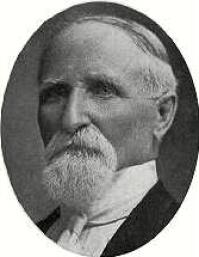
John Paul Cardon, son of Philippe Cardon and Martha Marie Tourin was born 28 Dec. 1839 at Pinerolo, Piedmont, Italy.
The Cardons found a place of refuge in the Italian Alps during the awful days of persecution that cost the lives of tens of thousands of noble souls, who maintained that every person had the right to worship God as he chose. Many of the Cardons were numbered among the martyrs. They were of the Valdenese and the second family in Italy to accept the restored gospel of Jesus Christ as taught by the Latter–Day Saints, under the direction of the late President Lorenzo Snow. This notable event in their lives took place in the year of 1853. In February 1854 Phillippe Cardon with his family consisting of 4 sons and 2 daughters left their native land to cast their lives and fortunes with the despised Mormons. Having already endured persecutions for their belief, it was nothing new for them to share in the hardships and persecutions that followed the Saints after reaching the valleys of the mountains.
The Cardons arrived in Utah 29 October 1854 with the Robert Campbell Company, settling in Weber County. Here they remained until the move south when Johnston’s army entered Utah. The previous year Paul Cardon, 1857 was married to Susanna Goudin, who crossed the plains with the Edmond Ellsworth Hand Cart Company, which arrived in Salt Lake on 26 Sept. 1856. From this union there were 6 sons and 5 daughters.
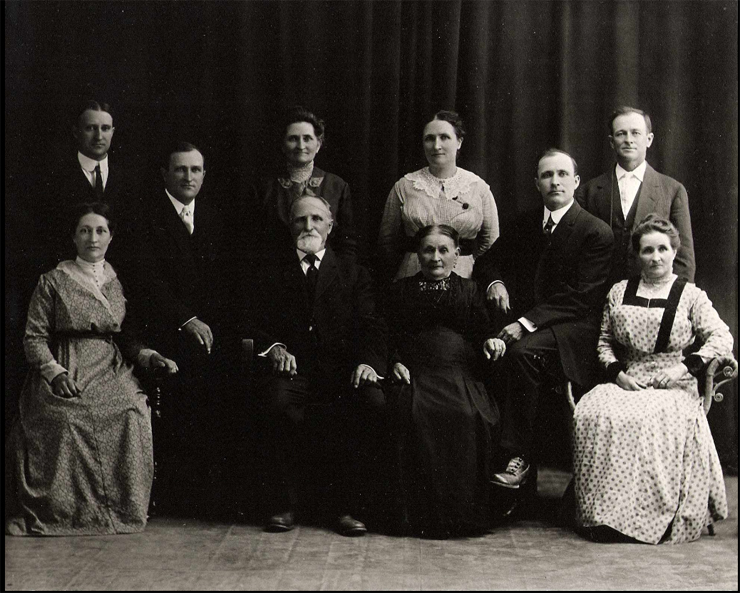
Middle Row Seated- Louis Samuel Cardon, Joseph Emanuel Cardon
Bottom Row Seated- Susette Cardon, John Paul Cardon, Susannah Goudin Cardon, Martha Mary Cardon
Not shown is Philip Cardon (died in 1863), Louisa Cardon (died in 1868), and Ezra Bartholomew Cardon
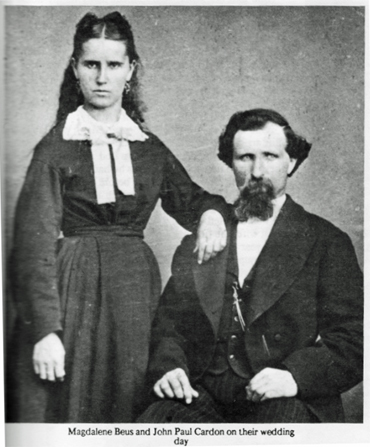
In December 1869 he was married to Magdalene Beuse, his 2nd wife, who came as a child with the Ellsworth Company. From this union 9 children were born, Three of whom are dead. After the return from the south the Cardon family settled in Marriott, Weber County . The following year 1859, Paul Cardon with his father and brother came to Logan, which then numbered but a few families. They entered at once upon the activities necessary to protect themselves against the then, savage Indians, and the building up of a new settlement. Paul Cardon assisted in erecting the first log cabin in Logan, which was located on the block between 1st and 2nd North streets on the west side of the Main Street. He became actively engaged in the defending the settlement against the many Indian raids that took place during the early settlement of Cache Valley and risked his own life on many occasions in defending others. He was also constantly engaged in this work, neglecting his own personal affairs, and this admirable quality characterized his entire life. He was prominently identified with the religious, military, social and civil organizations of the early history of Logan City and vicinity. As a member of the Church he placed himself and all that he possessed at its service. In a military capacity Paul Cardon was First Lieutenant of Cavalry, having received his commission from the President of the United States. He had charge of the Temple Mill in Logan Canyon, which furnished the lumber for the Logan Temple. He assisted in the surveying and building of the Logan Canyon road.
The family of Paul Cardon resided in Logan continuously up to the year 1892. During this year, he with a few members of his family desiring a retired life, moved to Benson Ward where he secured a large farm. Here he became one of the Bishopric of that ward. In 1912 they moved back to Logan to do work in the Logan Temple and spend their last days with their children, most of them whom lived in Logan. Paul Cardon was the father of 20 children, the grandfather of 73, and the great grandfather of 17 making a total of 110 at the time of his death. Since then a great many more have been added to the list.
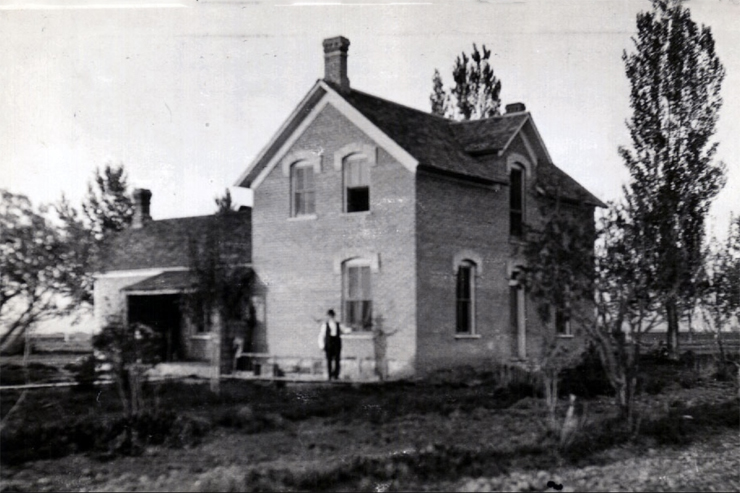
John Paul Cardon built the first adobe house of any size in Logan at the cost of $5000.00. Here 10 years he ran a hotel he called the Cache Valley House, which was known throughout the state as hotels were very scarce in those days. He was selected as one of the members to help build the Logan and Hyde Park canal, also help build the road through the canyon to Bear Lake. Three of four months of the next five years were spent by these men camping in the canyon and working on the road. They followed an Indian Trail along the river up to the left fork through Beaver and St. Charles. It says these men had many difficulties to endure; but they were blessed as to having plenty of meat as Elk, Bear, and Deer were plentiful.
For ten years Paul Cardon belonged to the minutemen of Logan, a regular military organization of 300 men which followed up and punished the Indians when they stole horses or killed any of the settlers. Every year Brigham Young visited the valley and in his trips to the new settlements he was always accompanied by some of the minutemen and in this capacity Brother Cardon has many times had the honor of traveling with him.
To the Italian origin of Paul Cardon, Cache Valley owes its mulberry trees and its attempts at the silk culture. Both he and his wife were experts in all branches of the silk industry. The conditions in Northern Italy and Cache Valley climates were very similar so he sent to France for mulberry seeds and the silk worms. The trees grew well and many of them are still living. The worms spun silk of excellent quality which Sister Cardon reeled and which was woven in Salt Lake City.
John Paul Cardon died at his home in Logan on the 12th of February 1915 at the age of 76. ( Utah 28 “Heart Throbs of the west” Page 284-288)
By 1866 at least 17 families had migrated to America from the Piedmont Valley of Italy. The first immigrants that left the Valley on 7 Feb. 1854 were eight members of the Phillippe Cardon Family. Cardons had been able to dispose of their property for enough to bring themselves and five others to Utah. They spent two weeks in London. At Liverpool they were delayed 17 days while the ship “The John M. Wood” was under construction. They sailed 12 March 1854 under the supervision of Robert Campbell. The passage took 51 days. There were 393 persons aboard. They arrived at New Orleans 1 May 1854. They went up the Mississippi River to St. Louis then to Kansas City where they were outfitted for their trek across the western wilderness. They left on 14 July 1854 for the Salt Lake Valley and arrive on 28 Oct. 1854. They experienced many hardships along the journey. Radical changes in diet worked one of the hardships on this group of people from Italy . They had been used to fresh fruit, unfermented wine, and etc at each meal. Paul Cardon said he had never seen any intoxicated from the juice. Most of all they missed the chestnuts. These had been used in roasting, creamed or ground into meal. When food was scarce in the Utah territory they boiled rose berries to help eke out their meager fare gleaned from the fields. They helped milk cows to pay for this privilege of gleaning.
The Sailing vessel, “John M. Wood” was 1146 tons, had 400 aboard, under a Captain Hartley. Other information about the early life of John Paul Cardon may be found in the History of his sister Magdelene also in my possession.
FIFTH OLDEST INHABITANT INTERVIEWED
Published in Cache Valley Paper
Mr. Paul Cardon tells of early road making, the Minutemen, the Silk Culture and the Italians part in early Cache Valley.
“The Italians are not numerous in Cache Valley but they have done their part in the development of the country. Their work may not be so extensive as that of the Germans, English or Scandinavians, but it is characterized by that good taste, intelligence, high degree of skill and love of beauty which are inborn in all those so fortunate as to have a drop of Italian blood in their veins. Among the early converts of the Mormon Church were several of the Waldenese of Piedmont in Northern Italy. This religious sect, starting in Lyons , in the twelfth century, was one of the earliest forms of Protestantism and spread quickly into the valleys of Switzerland and northern Italy, where it still exists and where its church holds a synod each year. The state of Utah has been fortunate to have among its inhabitants some of these enemies of the Roman Catholic Church, these sturdy defenders of their faith, for the martyr blood and the desire to fight for their opinions are strong in them yet, even after many generations.
One of the first converts from this church to come to Logan was Paul Cardon, now living in Benson Ward. Born of Pinerolo, near Turin, he came to America in 1854 at the age of fifteen and lived at Ogden until 1859. The commotion caused in the territory by the coming of Johnston’s army started a general shifting of the population and Mr. Cardon late in the fall of 1859 came up to Logan and selected a suitable location. He then went back to Ogden and returned with his father and brother Phillip in February, when all was ready to receive his family he went to Ogden in April and brought the family back with him. Like all other settlers he lived at first in a log house, but about 1868 or 1870 he built the large adobe house which still is standing on first north a little west of the post office. It was the first adobe of any size to be built in Logan and the bricks were made just west of where the station now is. The cost was $5000.00. Here for ten years Mr. Cardon ran a hotel called the “Cache Valley House.”
Mr. Cardon was early connected with the public enterprises of the new community. James H. Martineay, the town surveyor, had made plans, first for the Logan Hyde Park canal, and then for the Logan and Richmond canals, and in the construction of these two Mr. Cardon was active. About 1865, Peter Maughan selected him, with Mr. Thomas E. Ricks, Jos. Rich and Josiah Ricks, to construct the canyon road through to Bear Lake. Three of four months of each of the next five years were spent by these men camping in the canyon and working on the road. They followed an Indian trail along the river up the left fork through Beaver and St. Charles Canyons, then down to the settlement of St. Charles. Thanks to these men Cache and Bear Lake Counties were put into direct communication and have been ever since. This is probably the earliest engineering feat in the history of Cache and the early road builders had many difficulties to overcome. But the game was abundant, such as elk, bear and deer, and they were sustained by the feeling that they were working not only for themselves but also for the Church and State.
For ten years Mr. Cardon belonged to the minutemen of Logan, a regular militia organization of 300 men which followed up and punished the Indians when they stole horses or killed any of the new settlers. Every year Brigham Young visited the valley and in his trip to the new settlements he was usually accompanied by some of the minutemen. In this capacity Mr. Cardon had many times had the honor of traveling with him.
To the Italian origin of Mr. Cardon Cache Valley owes its mulberry trees and its attempts at silk culture. Both Mr. And Mrs. Cardon had become familiar with all branches of the silk culture in their youth and seeing the similarity of conditions in Cache Valley and Italy determined to start the culture here.
Mr. Cardon sent to France for mulberry seeds and silk worms. The trees grew well and many of them are still living. The worms spun silk of excellent quality, which Mrs. Cardon reeled and wove into clothes in Salt Lake City. Mrs. Cardon reeled the first silk produced in Utah and is probably now the only woman in the state who knows the art. She has received medals for the excellence of her work from New Jersey, California and the world’s fair at Chicago and for a while taught a class at Logan in silk reeling. The mulberry trees are sill flourishing but the silk worms are dead and so is the industry. It would be an excellent subject for some student of economics in Utah to prepare a monograph on the history of the silk culture in Utah, how it started and why it has not become a leading industry. The work of the Cardons is only one of the many European influences that have come into the county. It was one of vast possibilities and we wish it might have prospered. Mr. Cardon, however, stands for more than this one industry and the state should be grateful to Italy for sending us such a hard working, public-spirited, pleasant-natured citizen with so many artistic tastes.
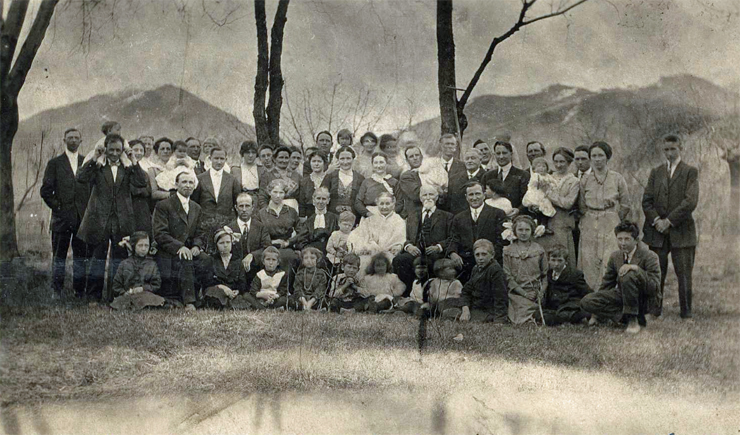
Click here for a printable PDF copy of this Life Sketch. (Photos are exclusive to this web edition.)
